Pollinator Plant Spotlight: Late Figwort
go.ncsu.edu/readext?948962
en Español / em Português
El inglés es el idioma de control de esta página. En la medida en que haya algún conflicto entre la traducción al inglés y la traducción, el inglés prevalece.
Al hacer clic en el enlace de traducción se activa un servicio de traducción gratuito para convertir la página al español. Al igual que con cualquier traducción por Internet, la conversión no es sensible al contexto y puede que no traduzca el texto en su significado original. NC State Extension no garantiza la exactitud del texto traducido. Por favor, tenga en cuenta que algunas aplicaciones y/o servicios pueden no funcionar como se espera cuando se traducen.
Português
Inglês é o idioma de controle desta página. Na medida que haja algum conflito entre o texto original em Inglês e a tradução, o Inglês prevalece.
Ao clicar no link de tradução, um serviço gratuito de tradução será ativado para converter a página para o Português. Como em qualquer tradução pela internet, a conversão não é sensivel ao contexto e pode não ocorrer a tradução para o significado orginal. O serviço de Extensão da Carolina do Norte (NC State Extension) não garante a exatidão do texto traduzido. Por favor, observe que algumas funções ou serviços podem não funcionar como esperado após a tradução.
English
English is the controlling language of this page. To the extent there is any conflict between the English text and the translation, English controls.
Clicking on the translation link activates a free translation service to convert the page to Spanish. As with any Internet translation, the conversion is not context-sensitive and may not translate the text to its original meaning. NC State Extension does not guarantee the accuracy of the translated text. Please note that some applications and/or services may not function as expected when translated.
Collapse ▲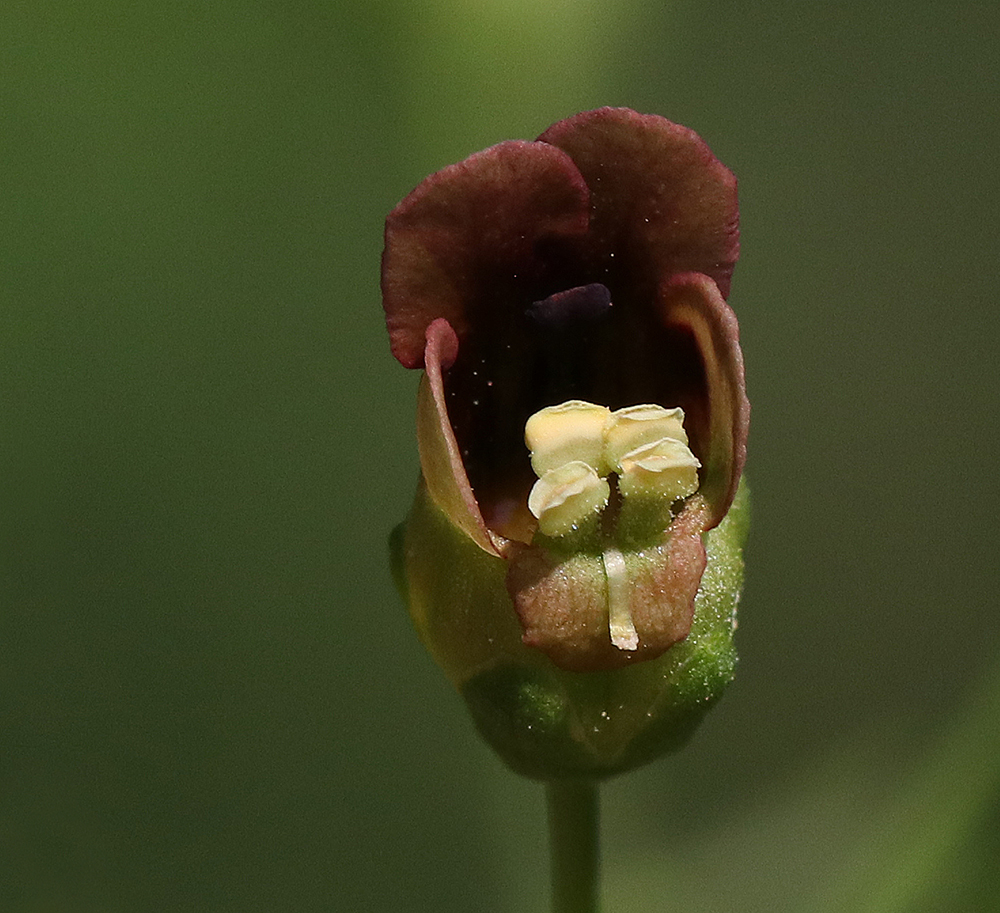
Tiny, unique bloom of late figwort. Photo by Debbie Roos.
Even though I have been managing my Pollinator Paradise Garden for 15 years, it continues to teach me every year. The garden features over 225 unique species of plants (85% of them native to North Carolina), but I still enjoy trying out new plants every year. Sometimes one of these new plants becomes my latest “plant crush” and I become semi-obsessed with it as I learn its habits and observe the various pollinators it attracts. This year I am unabashedly ready to proclaim that my plant crush is late figwort, Scrophularia marilandica!
I started learning about late figwort after I was gifted a plant during one of my garden tours in 2022. Once I started learning about it I was immediately intrigued for a few reasons: it’s native to North Carolina; it has very unique flowers (I have always been drawn to “weird” blooms); and most importantly, it enjoys a reputation for being an amazing nectar plant that attracts honey bees, native bees, wasps, flower flies, butterflies, and even hummingbirds.
I planted my dormant plant in the pollinator garden last fall. Since I only had one plant, I also purchased seed that I direct seeded in early November around the plant. Apparently it establishes well from seed because by spring I had a nice patch of late figwort emerging from the ground!
Late figwort is native to the eastern half of the U.S. from the mid-west to the east coast. Its reputation as a prolific nectar producer dates back to the 19th century when it was prized by beekeepers as a honey plant. Back in the 1880s beekeepers described how the honey bees visited late figwort blooms from sunrise to sundown collecting nectar which was quick to replenish; the honey produced from late figwort was described as being of very good quality.
Late figwort is a perennial that grows to 3-6 feet tall with square stems, opposite leaves, and small flowers that can range in color from ruby red to light green. It blooms from July-September. It can tolerate a range of soils from dry to wet. It loves full sun but can also do well in part shade. In my pollinator garden it is in full sun and dry soil.
I have enjoyed getting to know this plant all year and have already purchased more seed for fall sowing. I’m currently trying to figure out where I can make room in my crowded garden for more of this delightful species!
Check out the photos below to learn more about this useful and intriguing plant. Each photo has a descriptive caption.
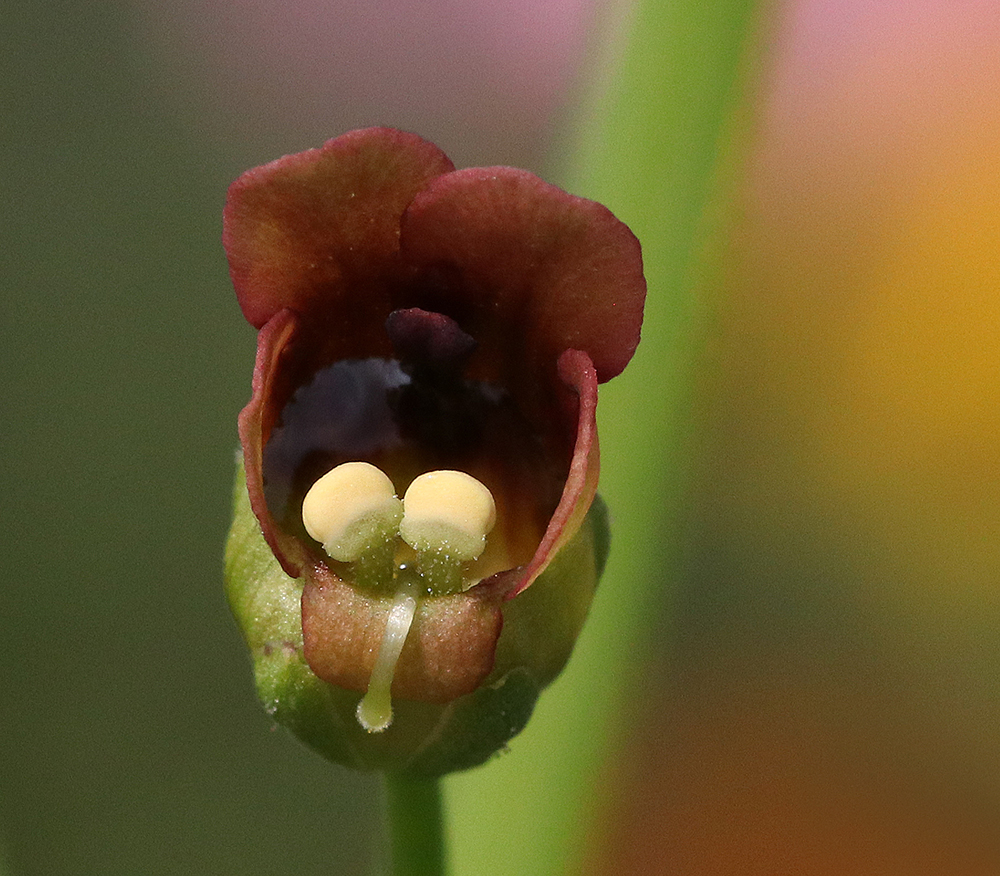
Given late figwort’s reputation for being such a prolific nectar producer, it’s fitting that its bloom is shaped like a honey pot! You can see the nectar glistening in this honey pot bloom. Photo by Debbie Roos.
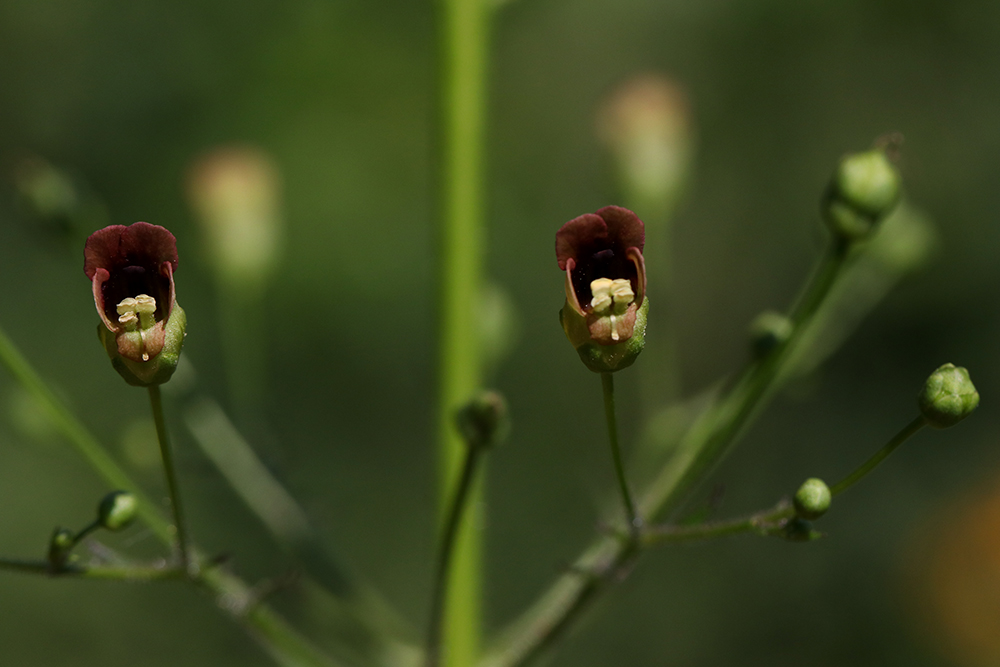
Each plant produces dozens of blooms from July-September. Photo by Debbie Roos.
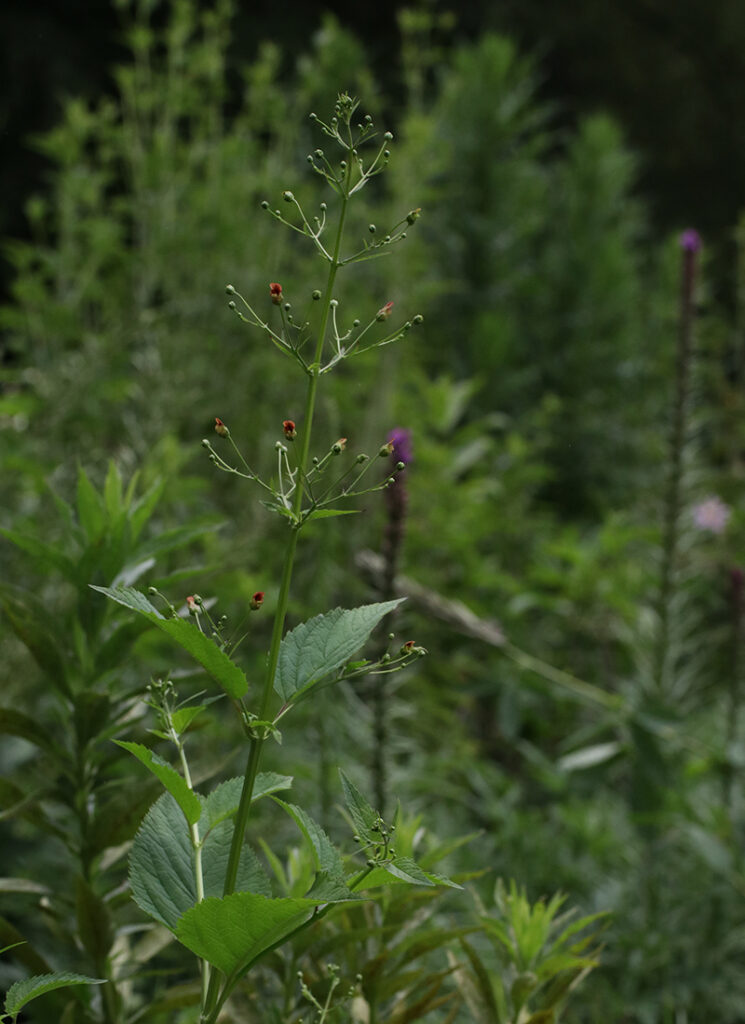
The blooms of late figwort are so tiny compared to the large serrated leaves. Photo by Debbie Roos.
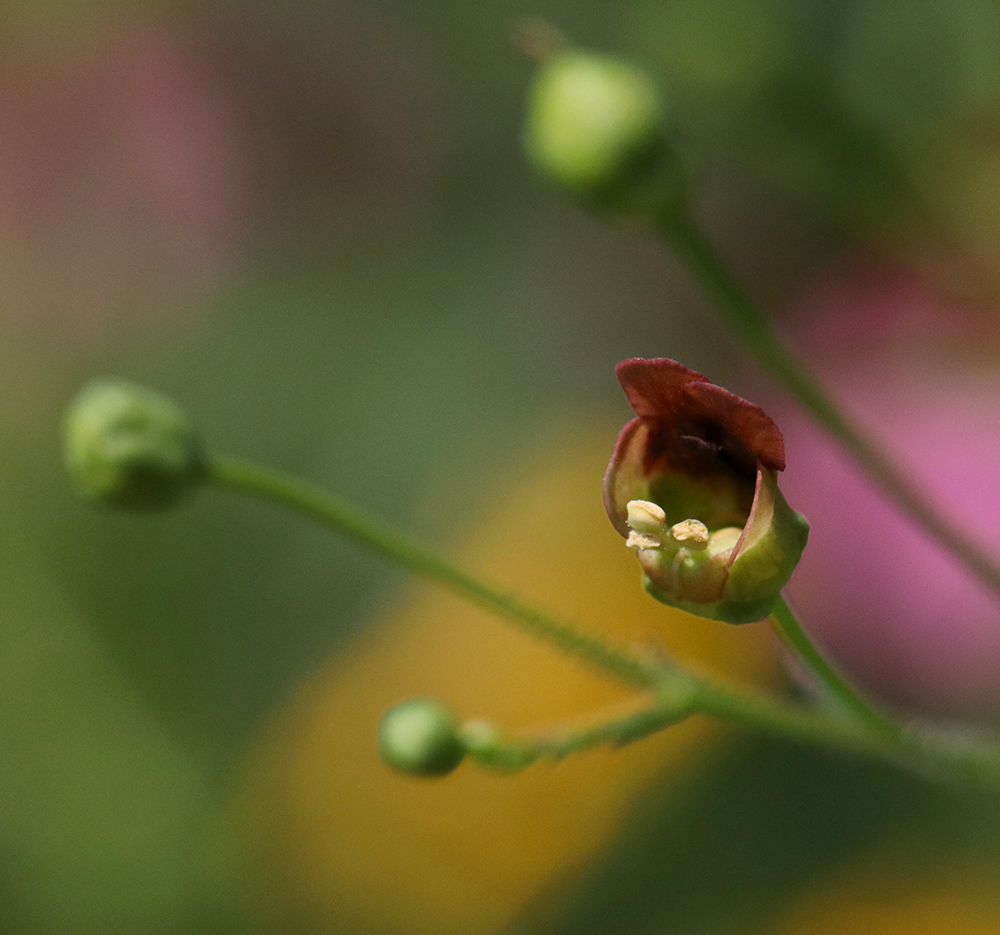
I love the alluring ruby red color of the late figwort bloom. Photo by Debbie Roos.
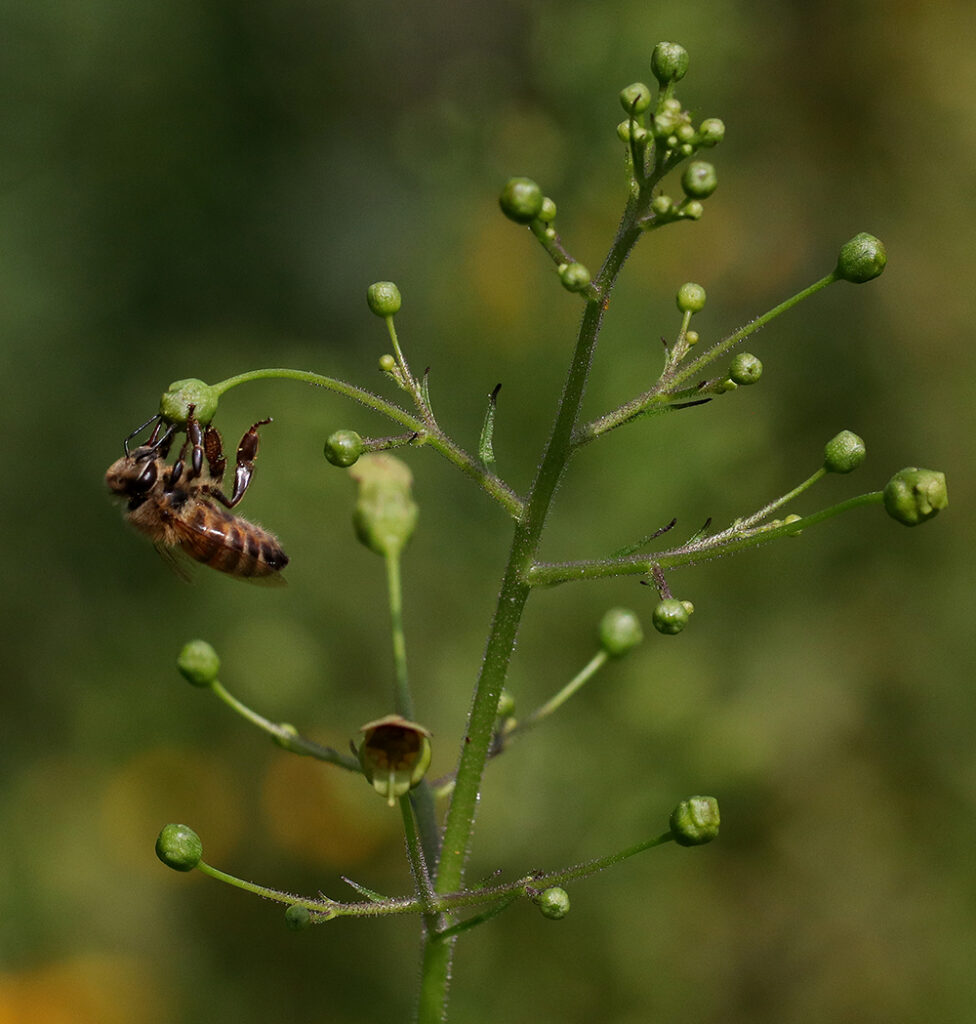
Honey bees have been all over the late figwort ever since it started blooming in late June in my pollinator garden. Back in the 1880s some beekeepers estimated an acre of figwort could produce 400-800 pounds of high quality honey. Photo by Debbie Roos.
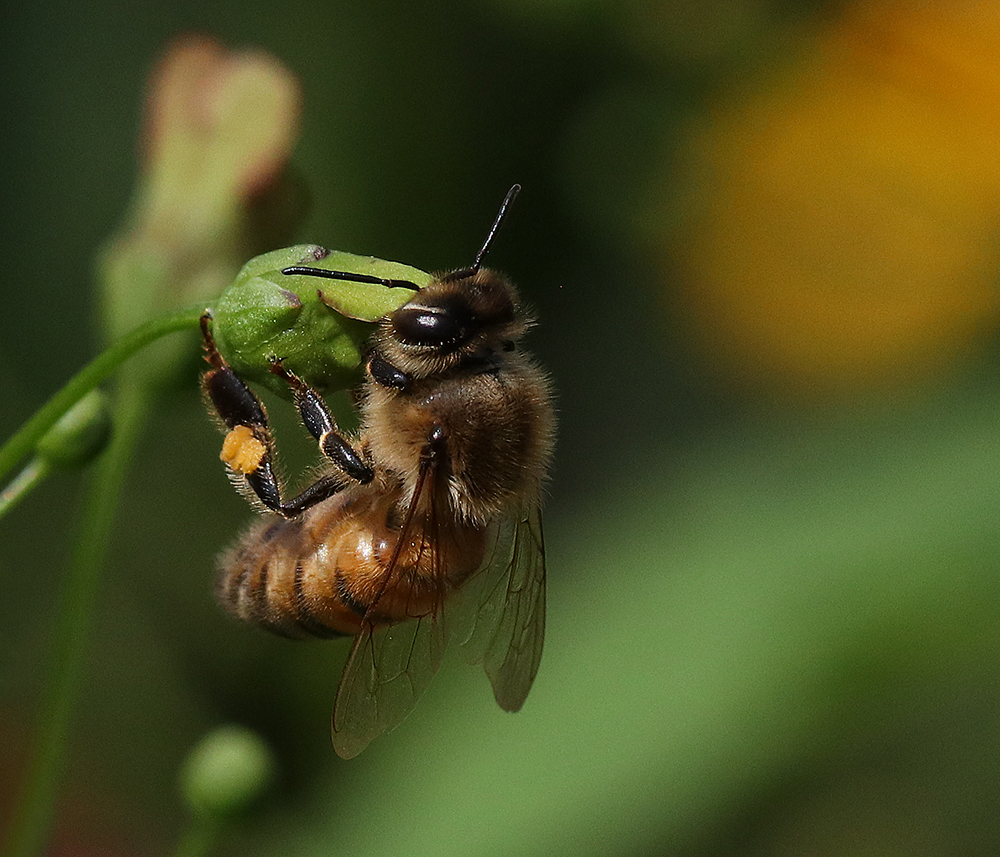
Late figwort has several other common names: Simpson’s honey plant, heal-all, square-stalk, and carpenter’s square! But today is it primarily referred to as late figwort. Photo by Debbie Roos.
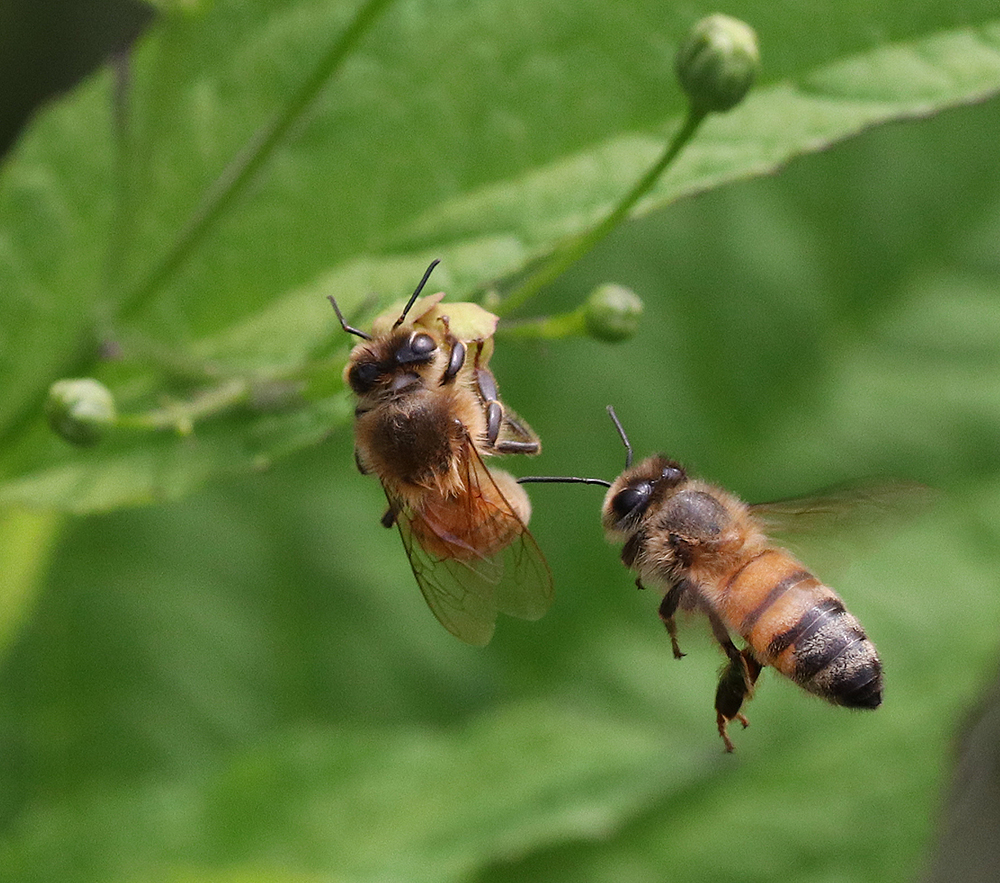
I often see multiple pollinators trying to land on the same bloom of late figwort! Photo by Debbie Roos.

Late figwort generated a lot of interest in the 1880s among beekeepers as a honey plant that the bees could work for two months when little else was blooming in summer. Photo by Debbie Roos.
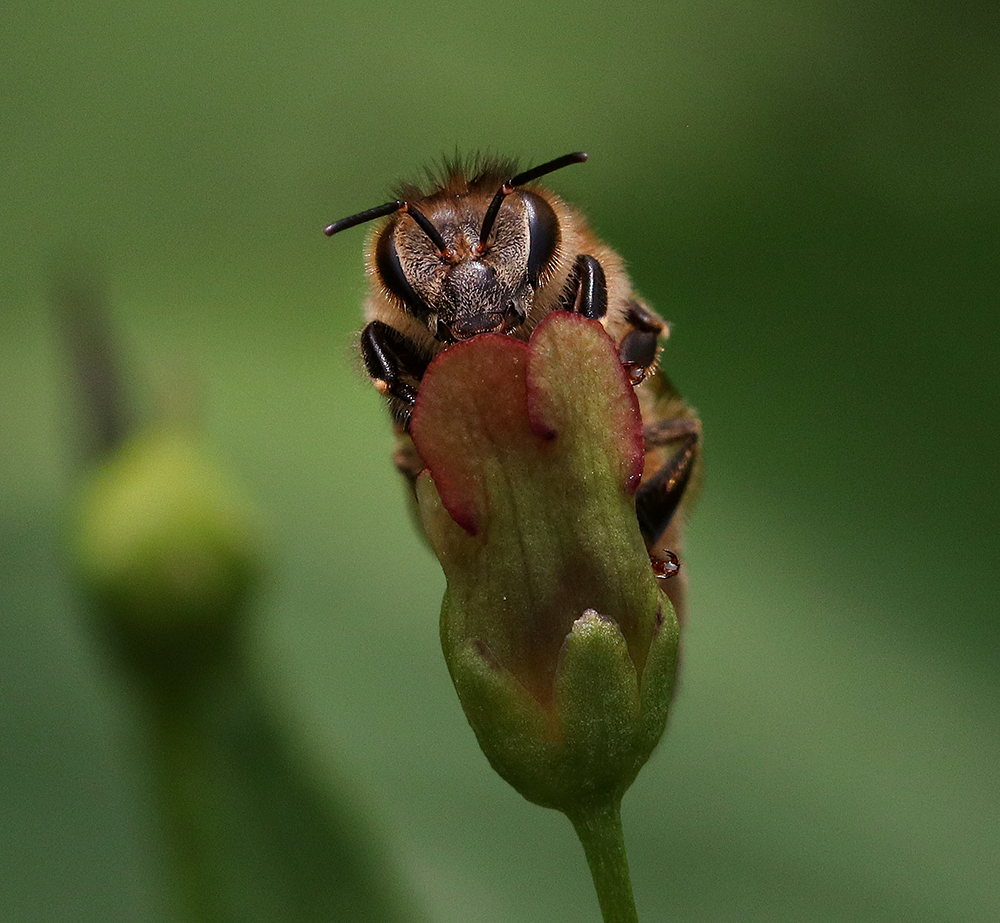
Honey bee on late figwort. Photo by Debbie Roos.
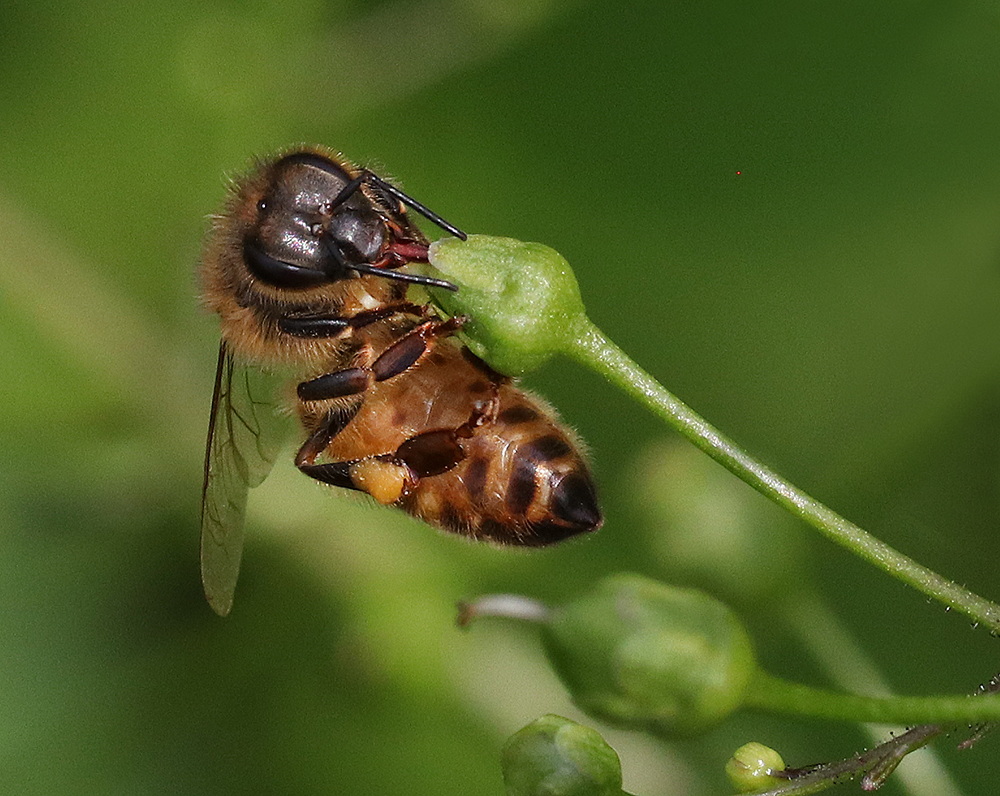
Late figwort flower color can range from burgundy to red to green! Photo by Debbie Roos.
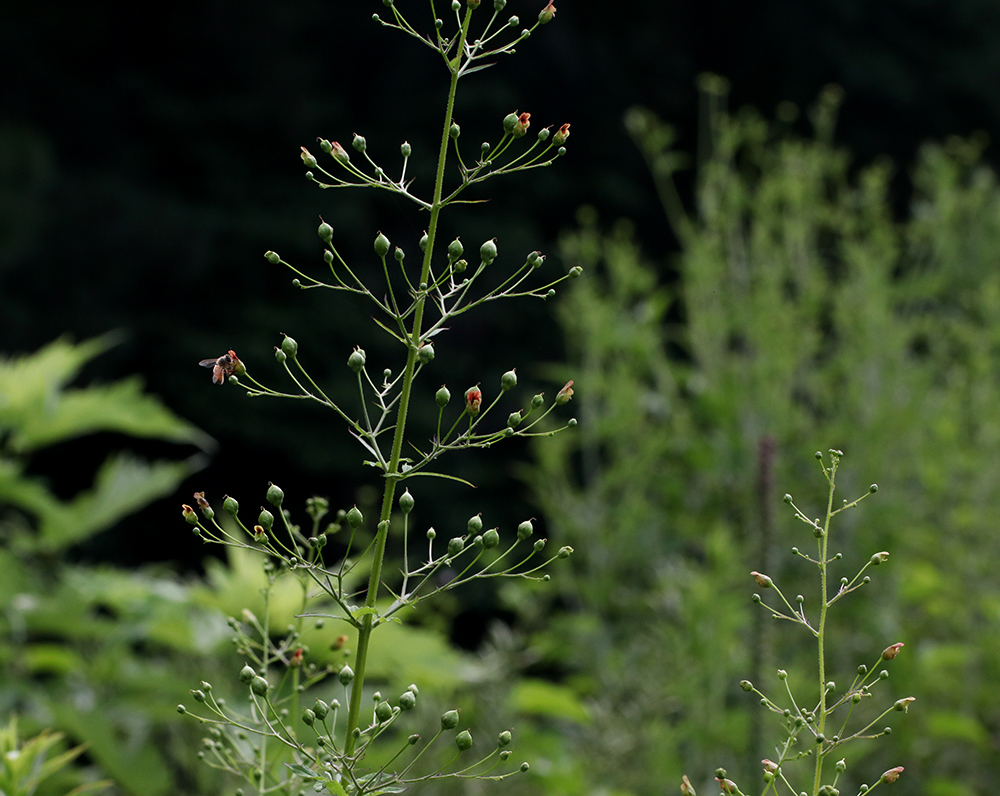
Late figwort has such tiny flowers so it’s not at all showy and might be mistaken for a weed! Personally I think it’s beautiful. Photo by Debbie Roos.
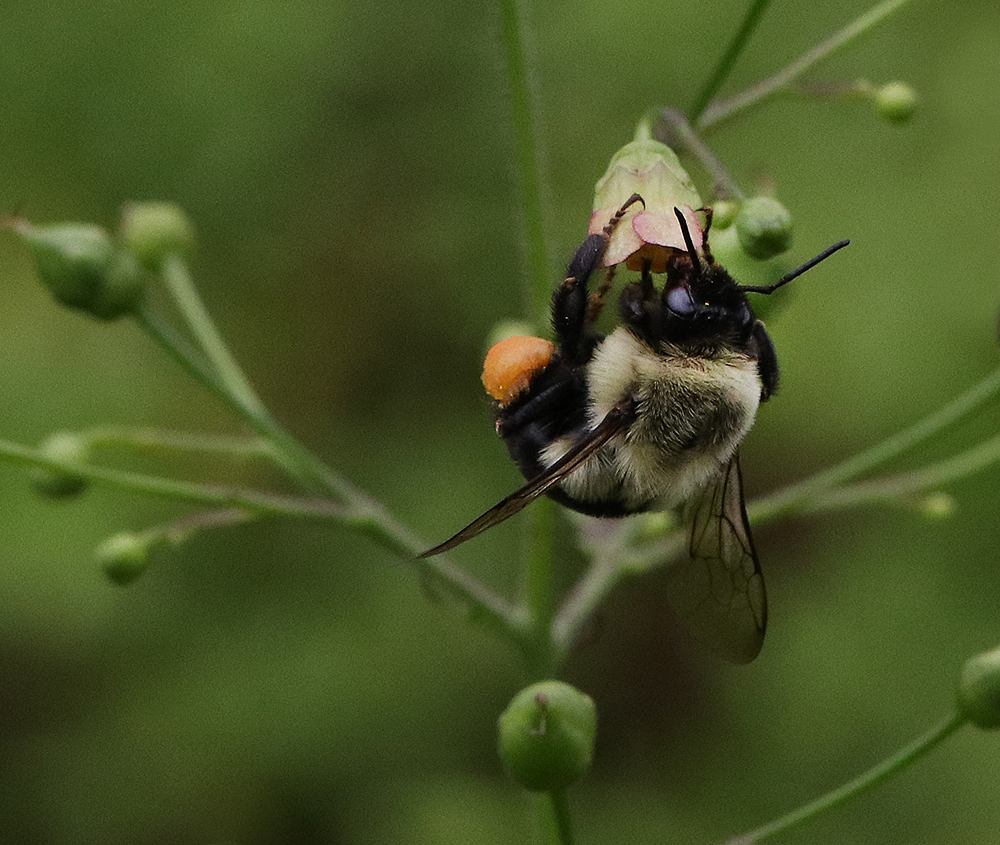
In my garden the honey bees were the first to discover the late figwort but after about a month the bumble bees discovered it and told their friends! Photo by Debbie Roos.
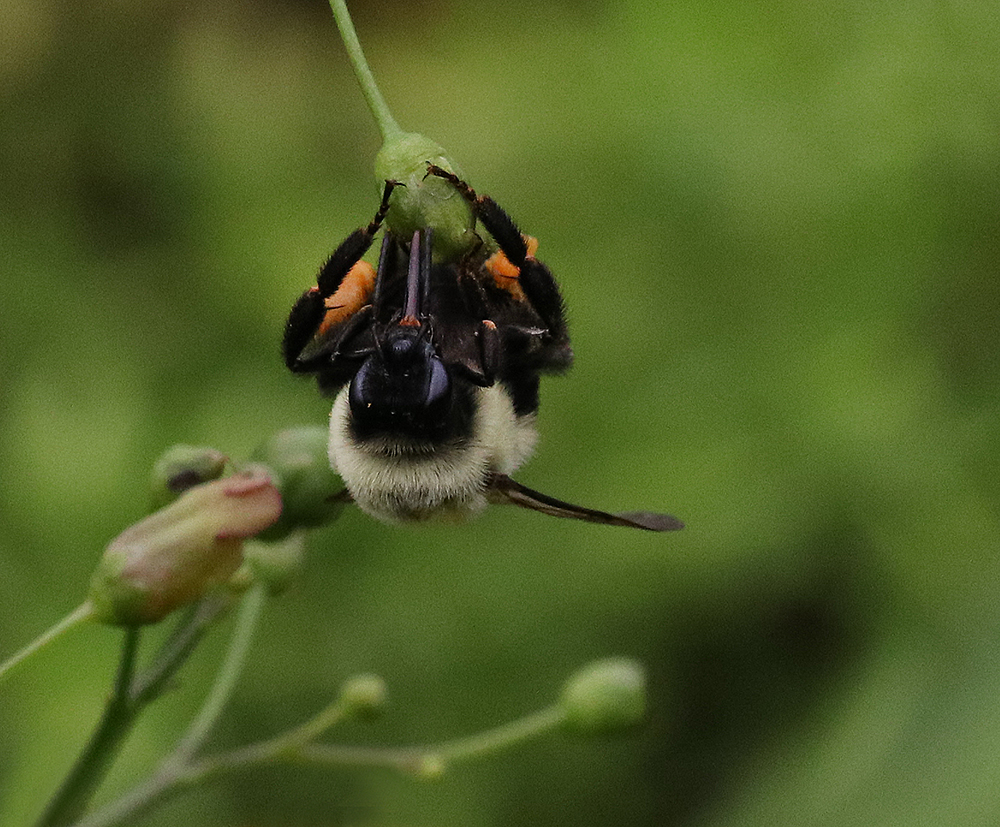
The long tongues of bumble bees make it easy to extract nectar from late figwort’s bell-shaped flower. Photo by Debbie Roos.
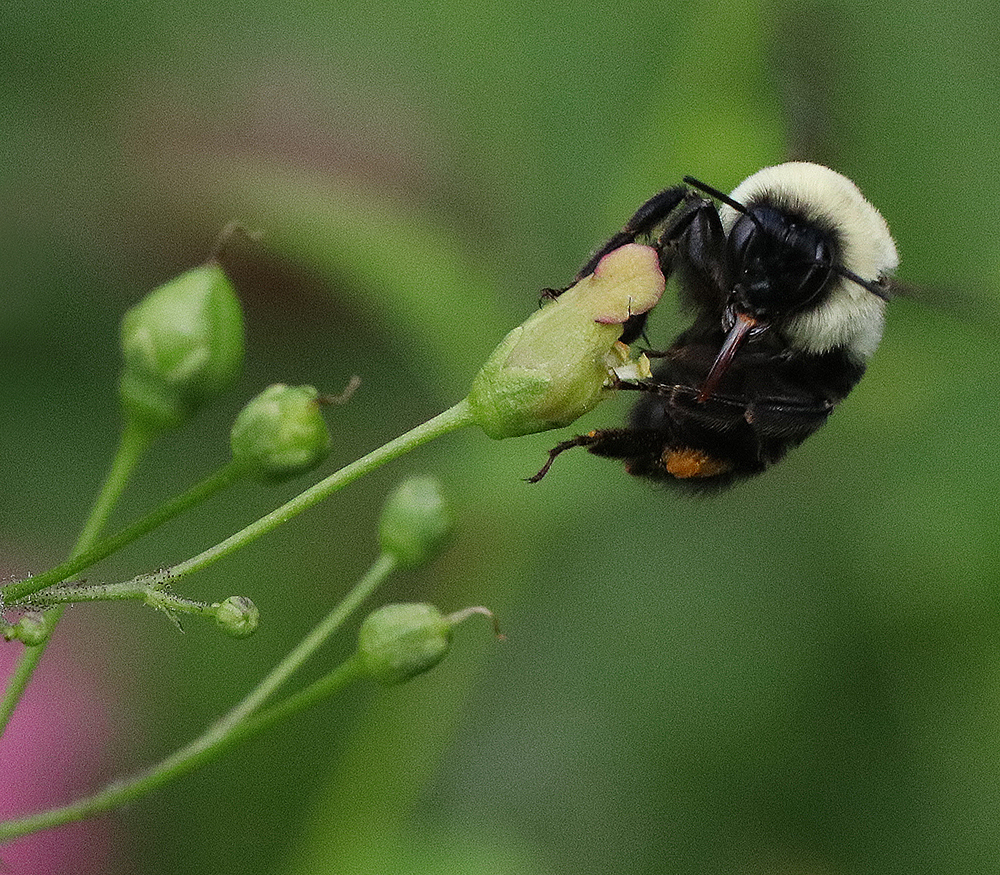
Like honey bees, bumble bees collect nectar to produce honey. Photo by Debbie Roos.
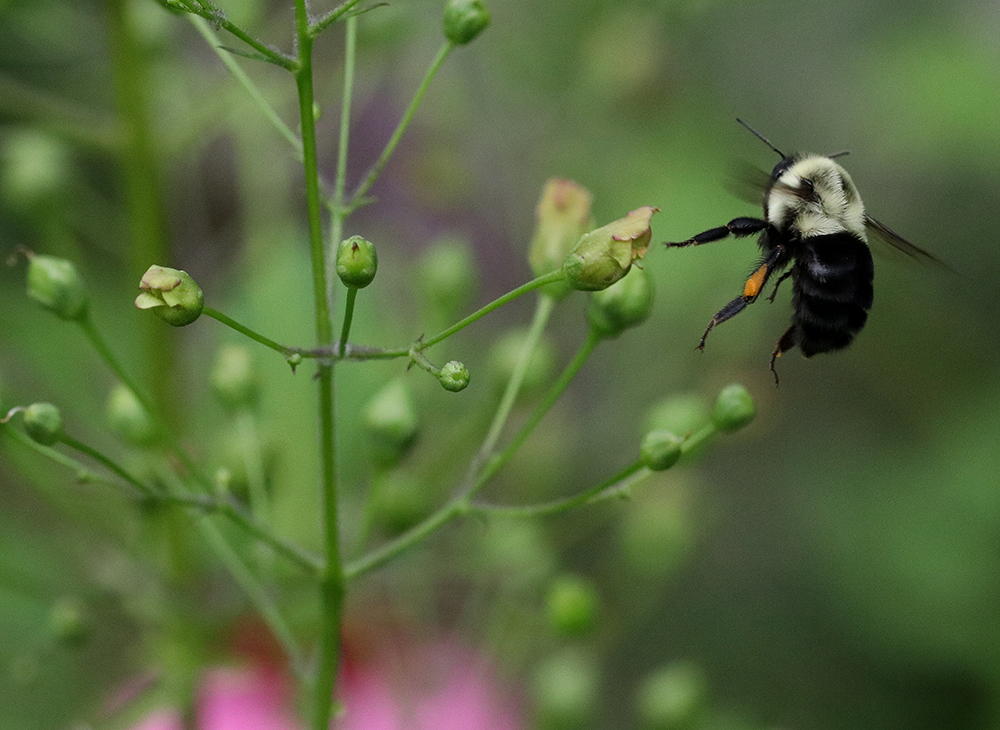
Incoming! Photo by Debbie Roos.
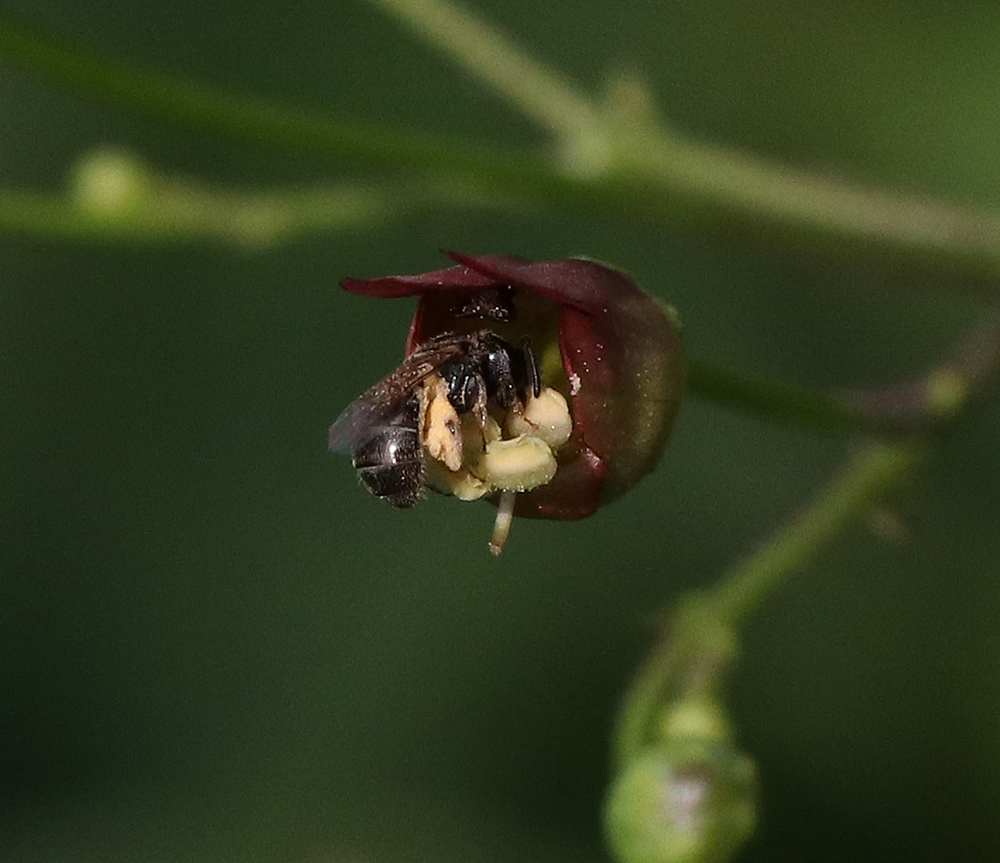
Native sweat bee on late figwort. Photo by Debbie Roos.
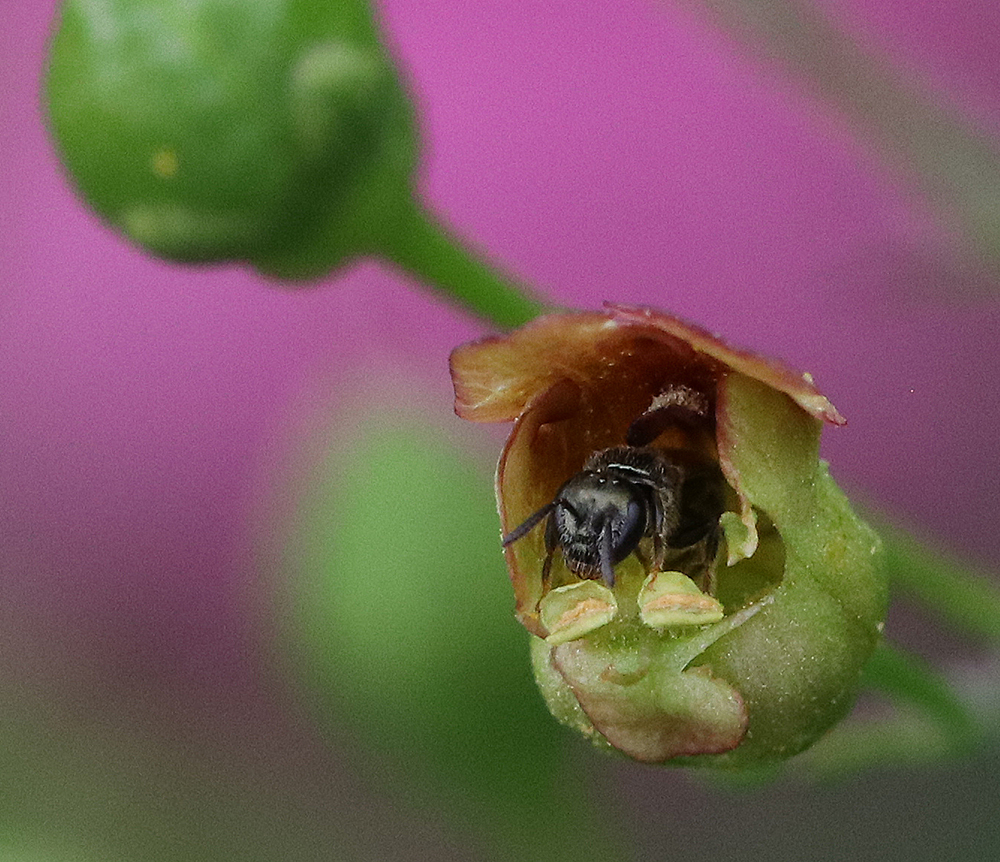
I noticed the tiny native sweat bees would enter the bloom then turn around inside it to defend it from other approaching bees! Photo by Debbie Roos.
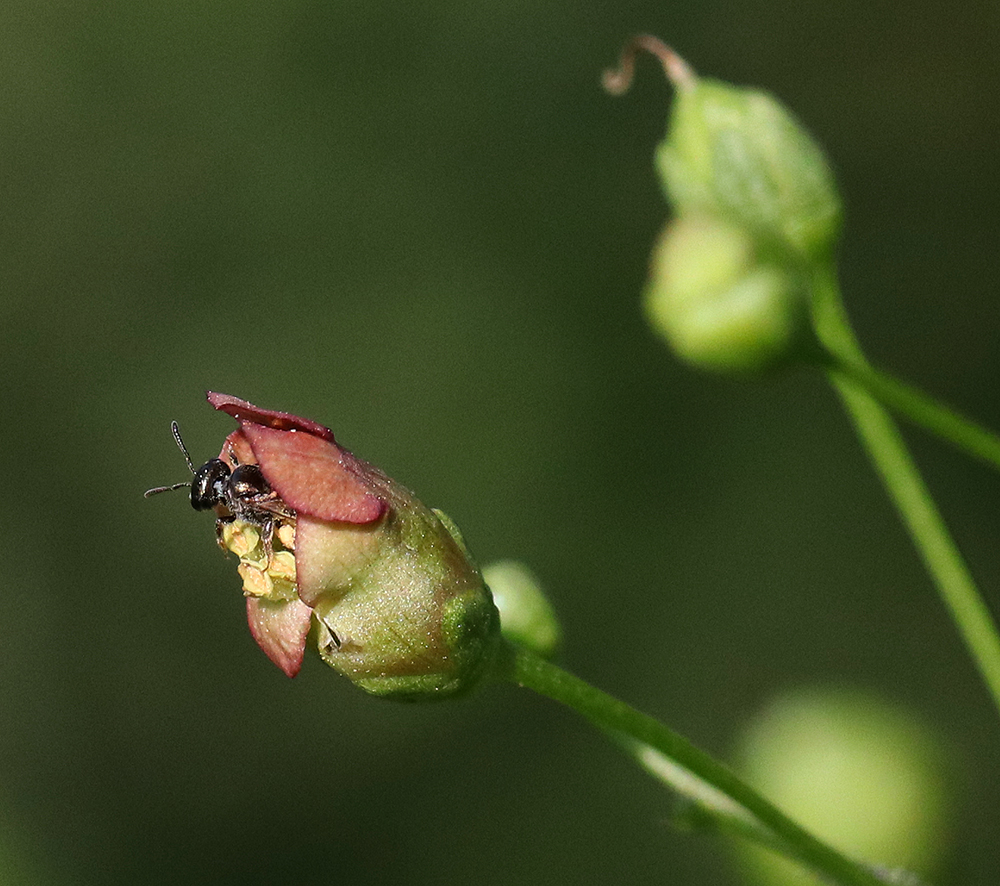
Heading back out. Photo by Debbie Roos.
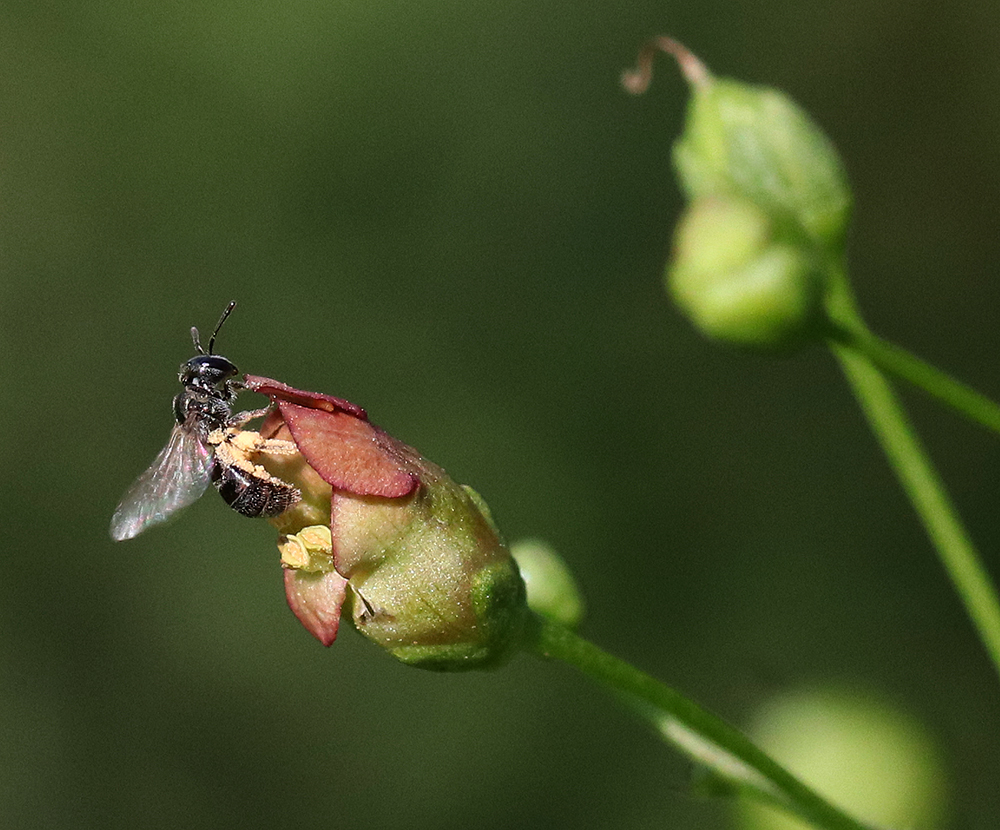
Native sweat bee exiting a late figwort bloom. Photo by Debbie Roos.
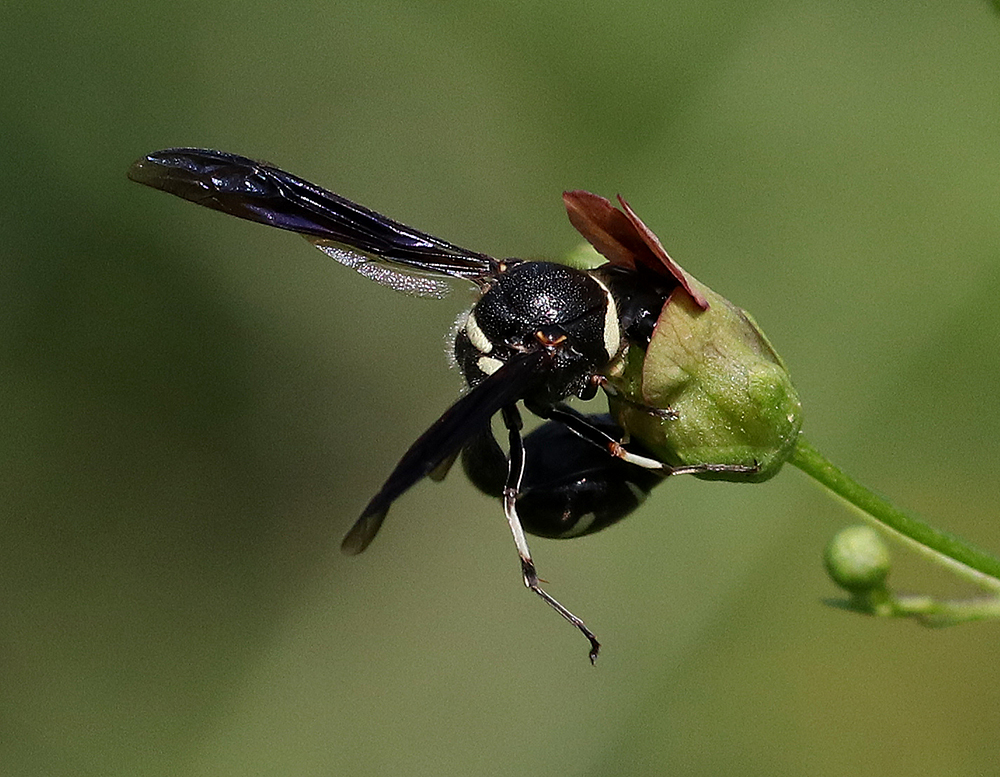
I observed a few different species of wasps on late figwort. This is a potter wasp. Photo by Debbie Roos.
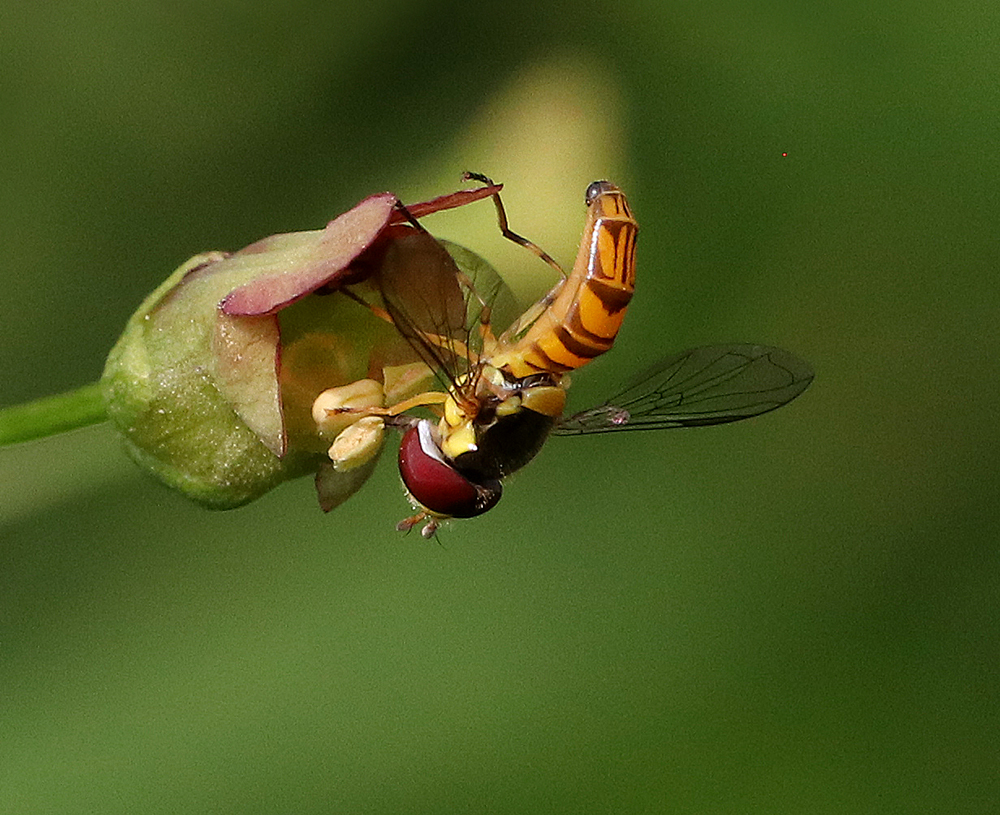
Syrphid flies are also frequent visitors to late figwort. Photo by Debbie Roos.
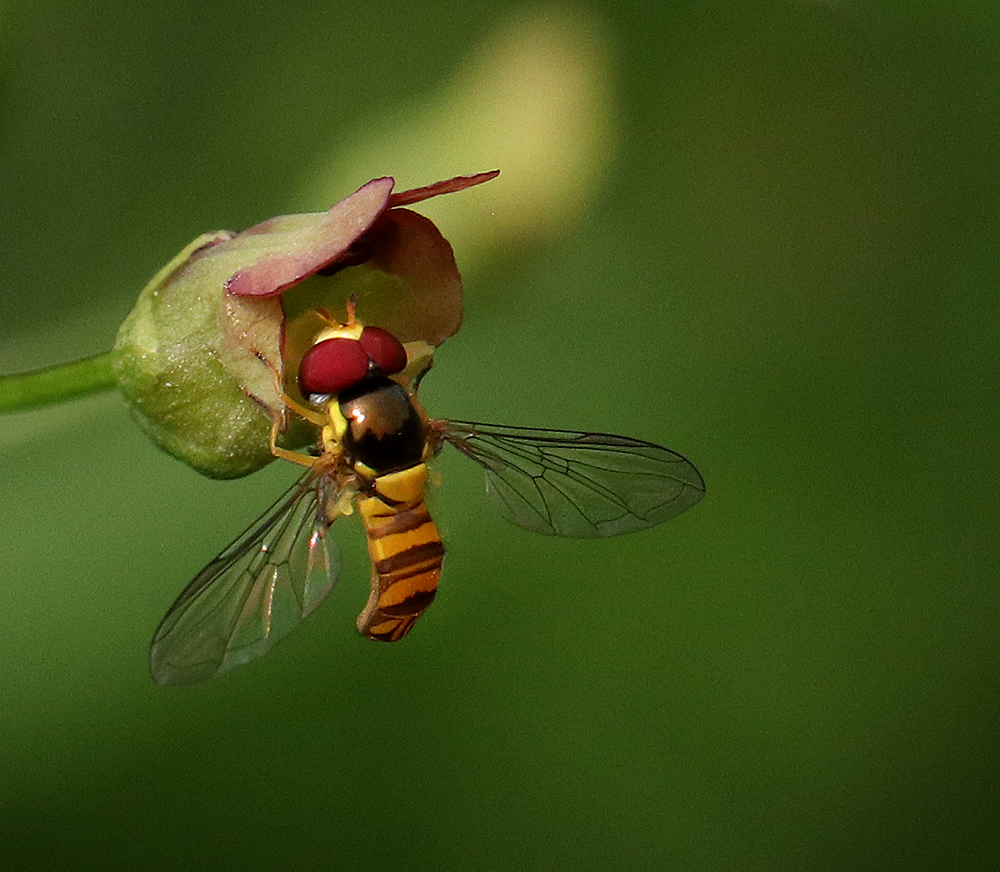
Syrphid flies are important pollinators and their larvae are aphid predators so they help with pest control. Photo by Debbie Roos.
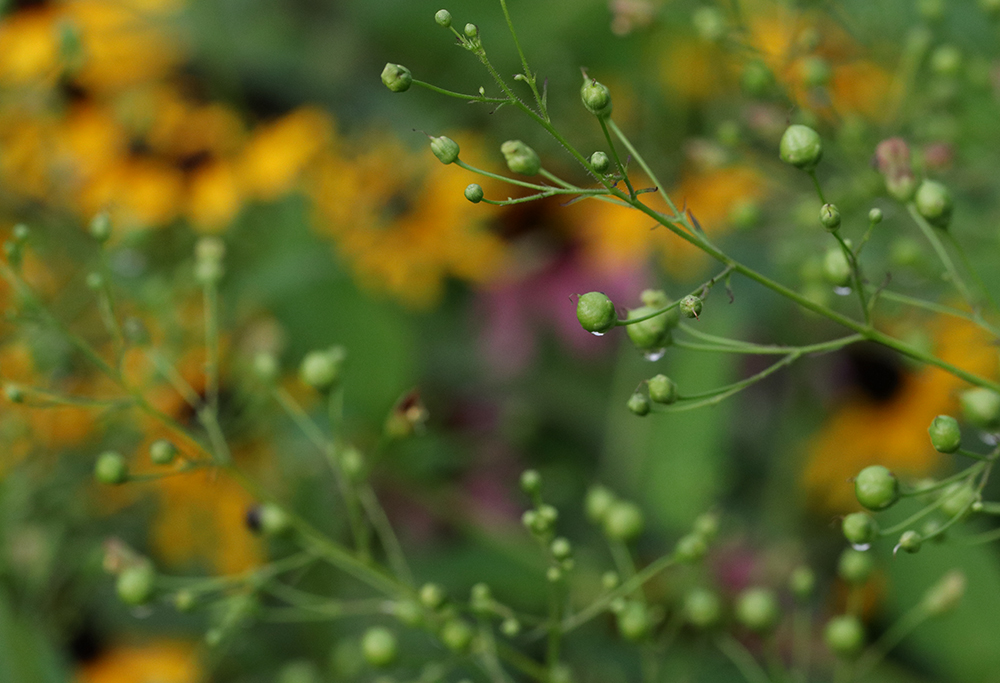
Seed pods of late figwort. Photo by Debbie Roos.


